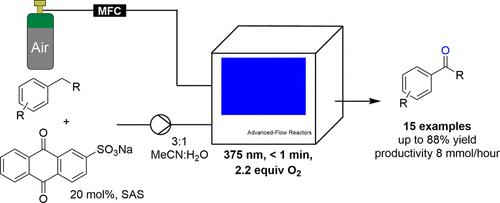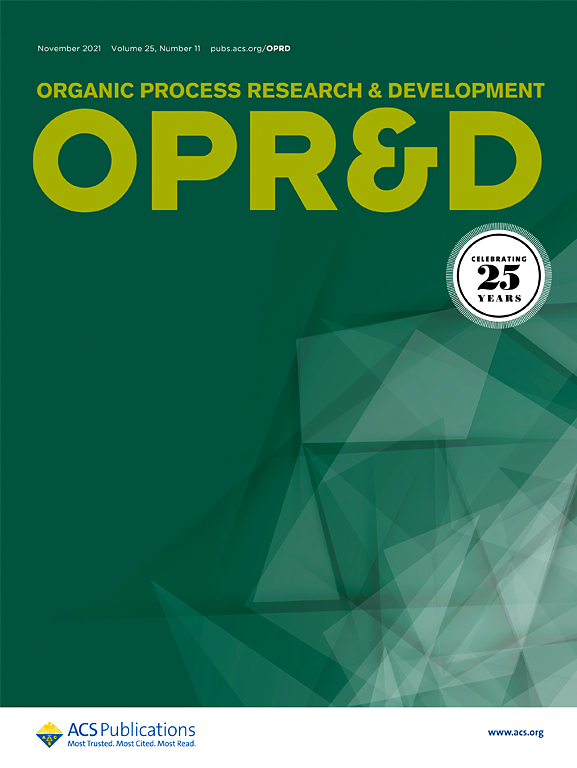利用压缩空气进行苄基光氧化的连续流方法
IF 3.5
3区 化学
Q2 CHEMISTRY, APPLIED
引用次数: 0
摘要
本文介绍了一种将苄基底物转化为酮和醛产物的有氧光氧化连续流方法。该工艺利用 UV-A LED(375 纳米)与康宁 AFR 反应器相结合,确保了有效的气液混合,并缩短了 1 分钟的停留时间。多种苄基底物被转化为相应的羰基产物,并证明了在几小时内生产多克产品的可扩展性。总之,由于结合使用空气作为氧化剂和 SAS(蒽醌-2 磺酸钠)作为水溶性光催化剂,这种连续流方法比其他氧化方法有了一些改进。使用更环保、更安全的条件以及工艺强化原则,使这种流动方法在进一步的工业应用中具有吸引力。本文章由计算机程序翻译,如有差异,请以英文原文为准。

Continuous Flow Approach for Benzylic Photo-oxidations Using Compressed Air
A continuous flow approach for the aerobic photo-oxidation of benzylic substrates to ketone and aldehyde products is presented. The resulting process exploits UV-A LEDs (375 nm) in combination with a Corning AFR reactor that ensures effective gas–liquid mixing and leads to short residence times of 1 min. A variety of benzylic substrates are converted to their corresponding carbonyl products, and scalability is demonstrated to produce multigram quantities of products within a few hours. Overall, this continuous flow approach offers several improvements over alternative oxidation methods due to the combined use of air as an oxidant and SAS (sodium anthraquinone-2 sulfonate) as a water-soluble photocatalyst. The use of greener and safer conditions together with process intensification principles renders this flow approach attractive for further industrial applications.
求助全文
通过发布文献求助,成功后即可免费获取论文全文。
去求助
来源期刊
CiteScore
6.90
自引率
14.70%
发文量
251
审稿时长
2 months
期刊介绍:
The journal Organic Process Research & Development serves as a communication tool between industrial chemists and chemists working in universities and research institutes. As such, it reports original work from the broad field of industrial process chemistry but also presents academic results that are relevant, or potentially relevant, to industrial applications. Process chemistry is the science that enables the safe, environmentally benign and ultimately economical manufacturing of organic compounds that are required in larger amounts to help address the needs of society. Consequently, the Journal encompasses every aspect of organic chemistry, including all aspects of catalysis, synthetic methodology development and synthetic strategy exploration, but also includes aspects from analytical and solid-state chemistry and chemical engineering, such as work-up tools,process safety, or flow-chemistry. The goal of development and optimization of chemical reactions and processes is their transfer to a larger scale; original work describing such studies and the actual implementation on scale is highly relevant to the journal. However, studies on new developments from either industry, research institutes or academia that have not yet been demonstrated on scale, but where an industrial utility can be expected and where the study has addressed important prerequisites for a scale-up and has given confidence into the reliability and practicality of the chemistry, also serve the mission of OPR&D as a communication tool between the different contributors to the field.

 求助内容:
求助内容: 应助结果提醒方式:
应助结果提醒方式:


